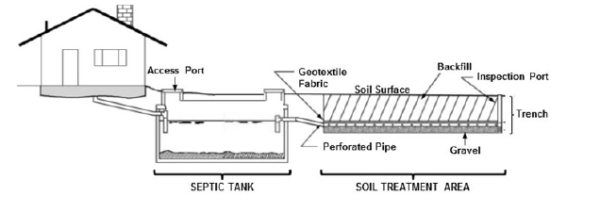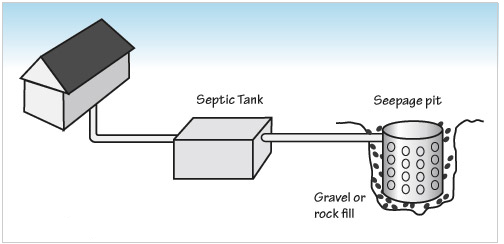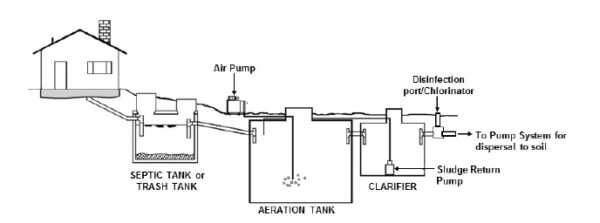What Is a Septic System?
A septic system is an onsite wastewater treatment solution commonly used in areas without municipal sewer access. It allows households to manage and dispose of wastewater safely and efficiently, directly on the property.
These systems use a combination of natural bacterial processes and engineered components to treat wastewater from bathrooms, kitchens, and laundry rooms. As a result, septic systems help protect public health and the environment in rural and unincorporated communities.
How Does a Septic System Work?
Although designs may vary, most residential septic systems include a large underground tank connected to a dispersal system. Wastewater from the home flows into the tank, where solids settle out and begin to break down naturally.
- Scum: Lighter substances such as fats, oils, and grease float to the top.
- Sludge: Heavier solids sink to the bottom and begin to decompose.
The middle layer, called effluent, exits the tank and flows into a drain field or other dispersal method. As it moves through gravel and soil layers, beneficial microbes continue to filter and purify the water before it returns to the groundwater system.
Common Types of Septic Systems
1. Conventional Tank & Leach Field
This is the most common configuration. Effluent flows into gravel-lined trenches that slowly release the water into surrounding soil for further treatment.

2. Seepage Pit System
In this design, liquid from the tank enters a deep vertical pit filled with gravel or surrounded by perforated concrete. This setup works well in smaller yards where space is limited.

3. Lagoon System
Instead of using a drain field, this system directs effluent into a shallow artificial treatment pond. Sunlight, oxygen, and microorganisms work together to reduce contaminants before the water evaporates or seeps into the ground.

4. Aerobic Treatment Unit (ATU)
ATUs inject oxygen into the tank to promote aerobic bacteria, which break down waste more quickly. These systems are useful where soil conditions limit conventional options or where higher-quality effluent is needed.

How to Tell If Your Property Uses a Septic System
Some homes are clearly labeled, while others require investigation. Consider these common indicators:
- Your home is outside city limits or not billed for sewer services
- There are tank lids, risers, or stand pipes visible in your yard
- You use a private water well instead of city water
If you’re still uncertain, a qualified plumbing professional can help identify the system on your property.
Why It’s Important to Understand Your Septic System
Understanding how your septic system works allows you to make informed decisions about maintenance, repairs, and responsible water usage. Moreover, proper system care can help you avoid expensive damage and prevent pollution of nearby wells and waterways.
Have questions about your septic setup or need help with repairs and service? Contact MCM Plumbing — we support homeowners across Merced County and the Central Valley.
Want to explore more? Visit the EPA’s Septic Systems information page for federal guidelines and environmental best practices.
Trademark Notice: MCM Plumbing™ is a trademark owned exclusively by MCM Plumbing. Unauthorized use of the name, logo, or any likeness is strictly prohibited without written permission.
